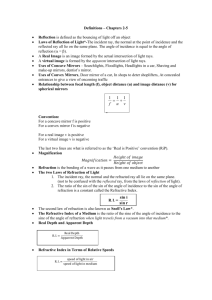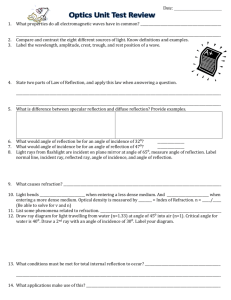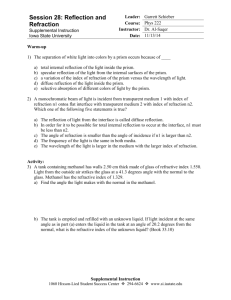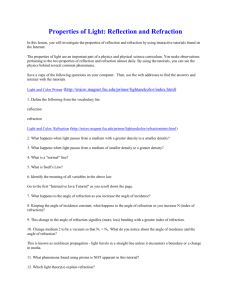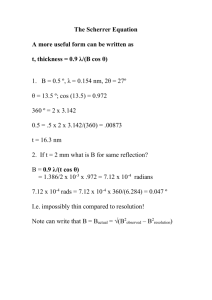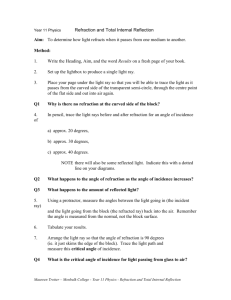Reflection and Refraction - Northern Illinois University
advertisement
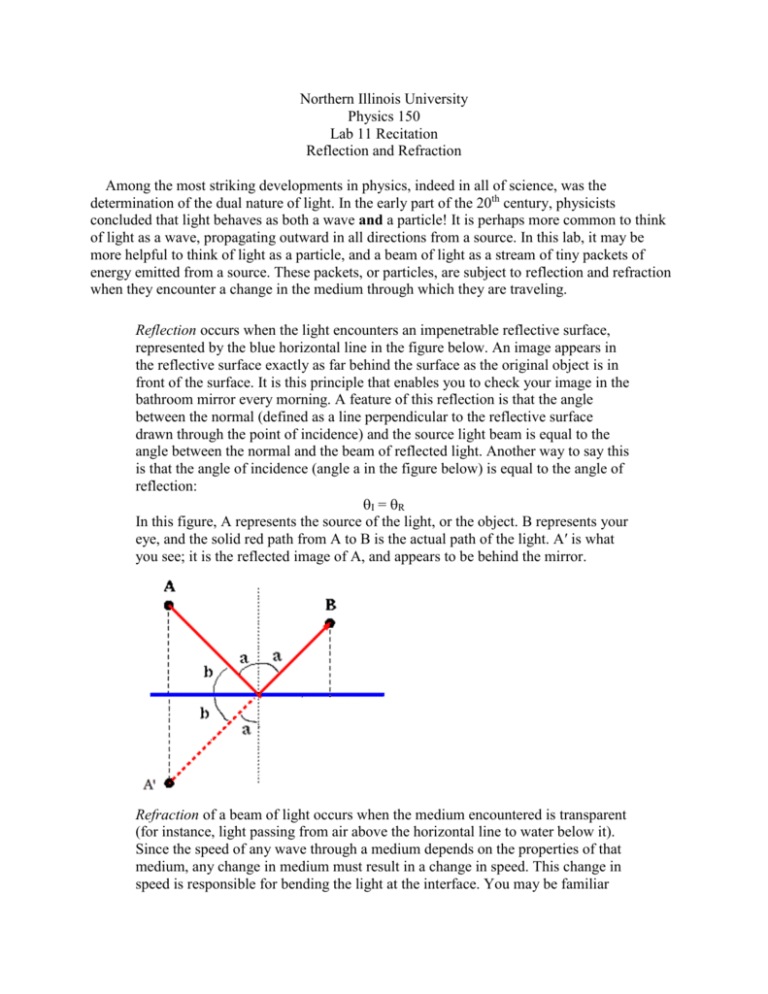
Northern Illinois University Physics 150 Lab 11 Recitation Reflection and Refraction Among the most striking developments in physics, indeed in all of science, was the determination of the dual nature of light. In the early part of the 20th century, physicists concluded that light behaves as both a wave and a particle! It is perhaps more common to think of light as a wave, propagating outward in all directions from a source. In this lab, it may be more helpful to think of light as a particle, and a beam of light as a stream of tiny packets of energy emitted from a source. These packets, or particles, are subject to reflection and refraction when they encounter a change in the medium through which they are traveling. Reflection occurs when the light encounters an impenetrable reflective surface, represented by the blue horizontal line in the figure below. An image appears in the reflective surface exactly as far behind the surface as the original object is in front of the surface. It is this principle that enables you to check your image in the bathroom mirror every morning. A feature of this reflection is that the angle between the normal (defined as a line perpendicular to the reflective surface drawn through the point of incidence) and the source light beam is equal to the angle between the normal and the beam of reflected light. Another way to say this is that the angle of incidence (angle a in the figure below) is equal to the angle of reflection: I = R In this figure, A represents the source of the light, or the object. B represents your eye, and the solid red path from A to B is the actual path of the light. A′ is what you see; it is the reflected image of A, and appears to be behind the mirror. Refraction of a beam of light occurs when the medium encountered is transparent (for instance, light passing from air above the horizontal line to water below it). Since the speed of any wave through a medium depends on the properties of that medium, any change in medium must result in a change in speed. This change in speed is responsible for bending the light at the interface. You may be familiar with the appearance of a "bent" pencil if you hold it halfway into a container of water. In the figure below, the angle of incidence is angle a and the angle of refraction is angle b. Both angles are defined by the normal (the dotted line) and the path of the light through the medium. If we know something about the relative refractive indices of each medium, then we can predict the behavior of light as it proceeds from one to the other; here we are assuming that the refractive index of air is equal to 1 (same as a vacuum), which is very nearly true: n = sinA/sinG A = angle between the normal and the light path in air (angle a in the diagram) G = angle between the normal and the light path in glass (angle b in the diagram) Combined, these two phenomena (reflection and refraction) account for the fact that you will only ever see a rainbow if you are between the rain and the Sun. In this lab, we will employ some rather simple techniques that will allow us to more easily visualize angles of incidence, reflection, and refraction and to reach some conclusions about their relationships.

